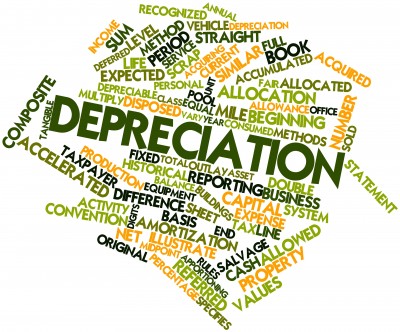Accounting
6 Keys to Asset Depreciation
The term “depreciation” may have negative connotations, but it usually elicits positive vibes from tax practitioners. Thanks to the depreciation deduction rules, your clients who are business owners can recoup most -- if not all -- of the cost of ...
May. 22, 2017

The term “depreciation” may have negative connotations to those who find the process confusing, annoying, or frustrating, but it usually elicits positive vibes from tax practitioners. Thanks to the depreciation deduction rules, your clients who are business owners can recoup most — if not all — of the cost of business property placed in service during the year. What’s more, they may qualify for fast write-offs and some tax bonuses along the way.
Following is a brief summary of several key aspects of the depreciation rules under current law.
Modified Accelerated Cost Recovery System: The Modified Accelerated Cost Recovery System (MACRS) is the basic system used for depreciating business property. Under MACRS, deductions are based on the useful lives of property, utilizing an accelerated method of depreciation. Generally, the cost of business equipment is recovered over a seven-year period although computers and vehicles are classified as five-year property. Caveat: Other special rules may apply (see below).
Section 179 deductions: In lieu of using MACRS (or in combination with MACRS), you can elect to “expense” — in other words, currently deduct — up to $510,000 of qualified new or used property placed in service in 2017. This maximum allowance is reduced on a dollar-for-dollar basis for total assets placed in service above $2,030,000, giving plenty of leeway to most small business operations. As a general rule, businesses will opt for the faster deduction, while any excess may still be depreciated under MACRS.
Bonus depreciation: This special tax break allows business clients to take an additional 50% “bonus” depreciation deduction, when available, for qualified new (but not used) business property. Notably, qualified property for this purpose includes MACRS property with a cost recovery period of 20 years or less. But 50% bonus depreciation is scheduled to decline to 40% in 2018 and 30% in 2019 before it disappears completely for 2020 and thereafter. Note that bonus depreciation may be claimed in conjunction with Section 179 and MACRS deductions.
Fast building write-offs: Normally, a business building must be depreciated over a lengthy 39-year cost recovery period. However, under a special exception for qualified leasehold improvement property, qualified restaurant property and qualified retail improvement property, the period is cut by more than half to just 15 years. But certain expenses — including enlargements, elevators/escalators, common area work and internal structural framework – are excluded from the list of qualified expenses.
Listed property: For other types of property, known as “listed” property, deductions allowed under MACRS or Section 179, or any combination, are limited and subject to tough recordkeeping requirements. Listed property includes:
- Passenger vehicles and most other vehicles used for transportation;
- Equipment that’s normally used for entertainment or recreation (e.g., photographic, audio, communication, and video recording equipment); and
- Computers and peripherals (unless they are used only at a regular business establishment and owned or leased by the business operator).
Notably, the listed property rules limit deductions for so-called “luxury cars.” (These limits actually begin to kick in for moderately-priced vehicles.) The IRS issues annual updates to the maximum deductions based on the year the vehicle is placed in service. Also, if the vehicle is used 50 percent or less for business, you must depreciate the cost under a straight-line method as opposed to taking accelerated depreciation. Recapture rules apply to accelerated depreciation previously claimed if business use subsequently drops below 50 percent.
De minimis safe harbor: The IRS recently issued regulations that allow a business owner to expense certain depreciable property and improvements. To qualify for this safe harbor election, the property must have a useful life of less than one year or cost less than a specified dollar amount, depending on the financial reporting. For instance, if a business produces an applicable financial statement (AFS) or one of several similar documents, it may expense any fixed assets or improvements costing $5,000 or less. Otherwise, the expensing threshold is $2,500 (updated in 2016 from $500).
This is only a brief overview of several key provisions relating to depreciation deductions. Research the applicable rules thoroughly for each client’s situation.
